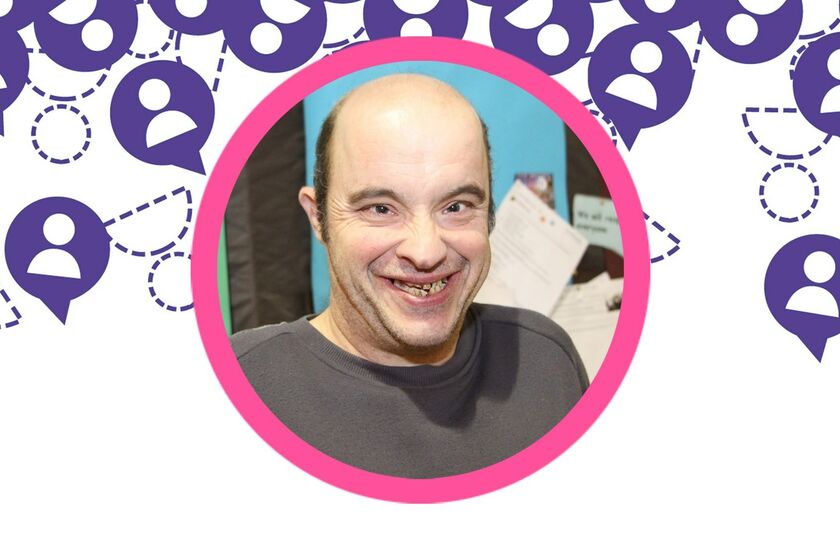Intimate self-touch and masturbation can pose many difficulties for people with learning disabilities and/or on the autistic spectrum, particularly when it happens in public settings. This frank and thorough guide looks at societal, cultural, and religious views of masturbation, how teens develop into sexual beings, the right to be sexual, how to masturbate, appropriate public and private behaviour, professional responsibilities and boundaries, and legal aspects of this topic. It also contains good practice responses and examples of the issues and solutions in action. Available here.
Supported Loving toolkit
Masturbation

The following toolkit page explores the topic of masturbation and how to effectively support an individual to engage in this activity, safely and legally.
Every person has the right to masturbate, and it is often the first and only way that some individuals can express their sexual desires and understand their own bodies.
Although masturbation is not illegal and has no minimum age linked to it, the law provides boundaries regarding how aspects of masturbation can occur, eg in public locations (Sexual Offences Act, 2003).
Masturbation is a topic not often spoken about in everyday life, let alone openly with people who have learning disabilities and autistic people. When it is referred to, often it is due to difficulties surrounding how an individual is engaging in masturbation. Especially when this is deemed as inappropriate (Cambridge et al, 2003), or there are concerns surrounding ineffective masturbation techniques (Cicero, 2019). Unfortunately, study data has shown how many people with learning disabilities and autistic individuals do not receive an appropriate formal sex education (Beddows & Brooks, 2016). When focussing upon masturbation, a lack of education programmes and difficulties in how to effectively teach masturbation techniques to this group (Hellemans et al, 2007). This often results in the individual having to fill the information void with whatever they can. Presently, the literature relating to the issue of how to assist someone to acquire the appropriate skills for safe masturbation is limited. In contrast the literature about reducing problematic masturbation behaviour is on the rise (Cicero, 2019).
Having a disability does not prevent an individual’s sexual maturity, or remove their sexual desires, feelings and needs. As with any individual, having the right knowledge, support and boundaries will help enable the person with learning disabilities and/or autistic people to engage in such activities in a healthy, safe and happy way. This support should come from appropriate sexuality training. The training will increase knowledge and confidence in discussing the topic, as well as development of appropriate policies to respond to issues of sexuality and masturbation. Unfortunately, this is often not the situation, and so many individuals must find their own way through the development of masturbation and the hazards that come with lack of information.
The following will provide some guidance on how to provide such support for individuals.
What are the most common challenges faced in this area and how best to support people to overcome them?
Regarding masturbation, there are several key areas where individuals with frequently require support:
- Masturbation technique – Often initial technique starts from some form of genital stimulation, especially if sensory processing is an issue, which focusses on the groin via rubbing or ‘dry humping’ the floor, furniture and people. Or inappropriate objects are used eg pens, cutlery or clothing to stimulate the area. In these cases, such technique can result in serious injury. Or there may be issues relating to accessing inappropriate locations, eg garden or lounge. It is important to note that some individuals may have sexual fetishes that require appropriate support to ensure it is safe and legal.
Assisting the individual should include considering any possible sensory difficulties and how to effectively support these. Teaching about masturbation techniques has to be hands off, including hand over hand and guiding a person’s hand, but you could use educational materials, including DVDs, models, drawings and pictures. If the individual is over 18, then the use of more graphic material may assist. However, it is important to prevent misunderstandings, so this should be agreed as part of a multi-disciplinary approach, documented and communicated with the person to ensure that no other literal meanings can be reached. - Location of masturbation – A private area, such as a person’s bedroom or possibly bathroom/toilet in their own home, are deemed as appropriate locations to masturbate in. However, for some individuals, such boundaries are not necessarily clear. This can lead to masturbation in public areas, including school, college, day centre toilets, which then requires clear guidance and support from staff. Unfortunately, making assumptions regarding someone’s understanding about this issue could lead to inadvertent rule-breaking and contact with the criminal justice system. It is important to explore the individual’s understanding about public and private areas, including differences between the toilet at home and those at school or in public, and recognising that being on a webcam, eg on Skype in an empty bedroom is not private. Gaining this understanding about the individual’s perception of public and private will help in providing prompts for when they need to access appropriate private areas to masturbate in. This work should, even in someone with good verbal skills, utilise visual methods (such as pictures/films) to explore the concepts and provide visual prompts for when the individual needs to relocate to engage in masturbation.
- Frequency of masturbation – Generally, frequency of masturbation reduces either due to finishing puberty or successfully reaching climax. Of course, even after this, it is difficult to gauge and measure whether an individual is masturbating excessively because, regardless of their disability, it depends upon them. However, one factor would be if the frequency of their masturbation impacts upon their ability to access the world around them, or if it causes injury to their genital area.
If it is felt that the individual is excessively masturbating, then further investigation is necessary. This should include any medical aspects, such as urinary tract infections, as well as medication side effects. Other aspects to consider are masturbation techniques not being effective and the possibility that masturbation has become an obsession for the individual. Support will have to centre upon the potential cause, but may include putting boundaries in place and providing alternative activities should there be links with boredom, etc.
Watch Mel Gadd's presentation for Supported Loving on why opening up the conversation on masturbation is so important. Mel also discusses why having the choice and freedom to masturbate in an appropriate place can be a rights issue and how you can support people to masturbate in private, if they so choose to.
Do...
- Recognise how the views of services and staff may impact upon the individual regarding their right to masturbate.
- Explore whether the individual understands the concepts involved with appropriate and safe masturbation, and their rights to engage in the activity. This should not be too intrusive. Services need to understand the individual’s masturbatory methods, including stimulatory methods, and whether climax is reached.
- Develop appropriate policies and procedures to protect both individuals and staff. There should be a comprehensive and proactive sex and relationships programme that includes the issue of masturbation.
Don't...
- Ignore the issues, especially if an individual is masturbating in an inappropriate manner or place. By ignoring the issue and not providing support, you are potentially putting the individual at risk.
- Assume that the individual is fully aware that they can masturbate. Some individuals may be under the impression that it is ‘dirty,’ or that they need permission from those around them to engage in masturbation.
- Make assumptions regarding the cause of inappropriate masturbation. This can be an indicator of sexual abuse that has happened or is still occurring. Studies have demonstrated the vulnerability of individuals with learning disabilities as victims of sexual abuse. Although inappropriate masturbation occurring due to sexual abuse is not necessarily a primary indicator, it is important that this is part of the overall exploration.
- Ignore the importance of emotions linked with masturbation, which can be experienced by the individual. These will need to be considered as they may override the individual’s control in engaging in the activity appropriately.
Case study
Jane is an autistic woman aged 21-years-old with learning disabilities. She lives in supported living accommodation and is supported by staff in developing her independence. Recently, staff have discovered Jane forcibly inserting various foreign objects into her vagina - underwear, pens, pencils, and the handle end of a pair of scissors. Attempts have been made to remove items from her room to reduce the problem, but she continues the practice even though it has resulted in a number of hospital visits due to the damage sustained.
Although the staff were correct in removing the foreign objects, it was important for staff to implement an individualised sex education programme, within which an appropriate person would explore the reasons behind her sexualised behaviour. This would reinforce to Jane (using appropriate visual learning materials) an understanding about her body, appropriate methods and rules for masturbation identifying correct processes including cleanliness and privacy. It was felt necessary to introduce a sex toy (a vibrator) to help Jane be more successful in masturbating. This involved the need to ensure that she was able to use it independently.
Top tips
- It is every individual’s right to have the opportunity to engage in masturbation. However, for many individuals with learning disabilities or autistic people, there has been an emphasis on pathologising and stigmatising the activity.
- Those supporting such individuals need to recognise how supporting people to gain a greater understanding about masturbation, helps to reduce the individual’s vulnerability.
- Never just assume that an individual has the knowledge about masturbation but assume that they need support and education.
Dr. Mark Brown, Senior Lecturer in Learning Disability Nursing at Kingston University, London and founder of Special Help 4 Special Needs.
The views expressed in the Supported Loving toolkit are not necessarily those of Choice Support.
Resources
Masturbation, Autism and Learning Disabilities: A guide for parents and professionals
Things Ellie Likes & Things Tom Likes
Books about sexuality and masturbation for girls and young women and boys and young men with autism and related conditions.
Sexuality and Learning Disabilities (2nd edition)
Sexuality and Learning Disabilities (2nd edition) is a handbook intended to guide anyone working with people with learning disabilities.
Talking Together About Growing Up: A Workbook for Parents of Children with Learning Disabilities
A PDF copy of the bestselling, Talking Together About Growing Up, resource for young people with learning disabilities.
All about us
All About Us from the Family Planning Association (FPA) is designed to help people with learning disabilities learn about growing up, sex and relationships.






